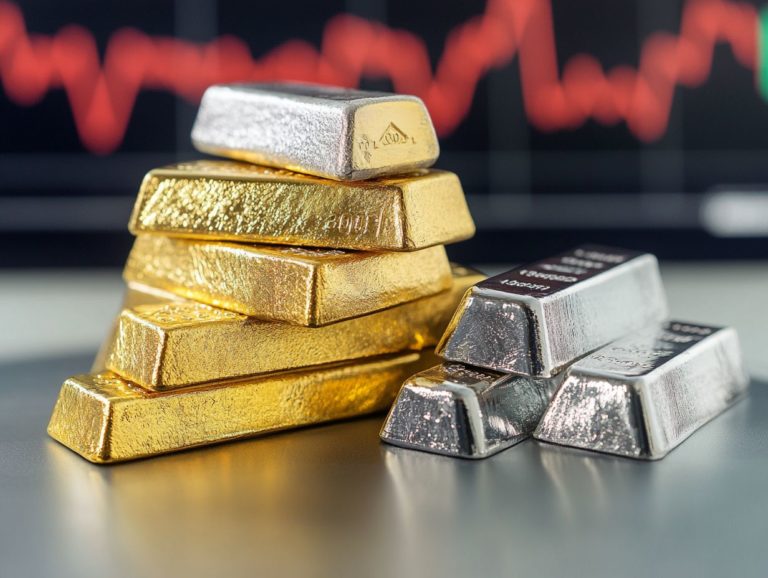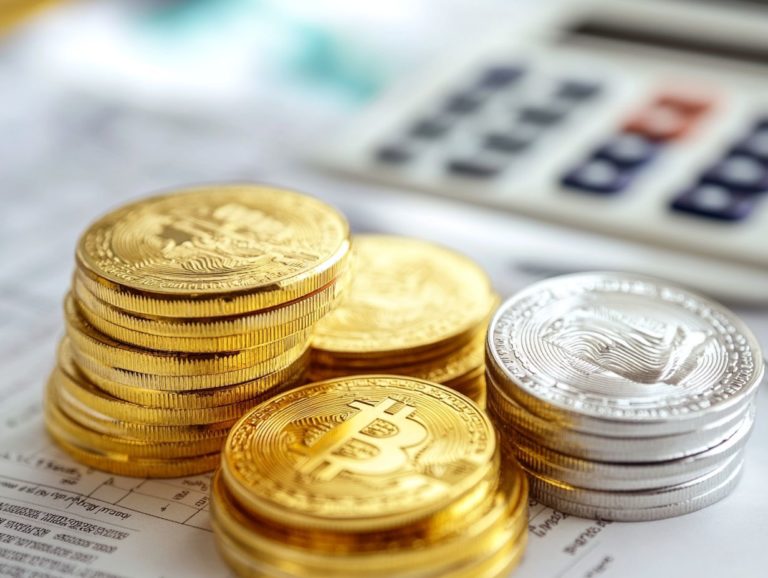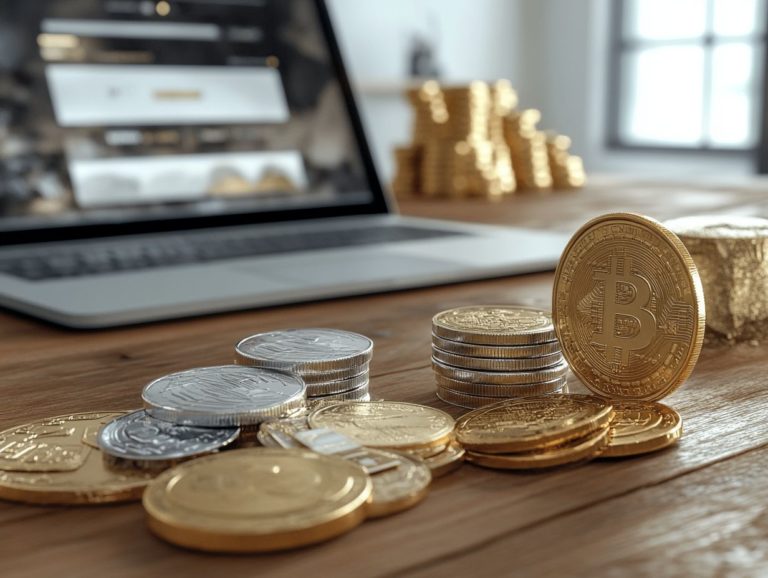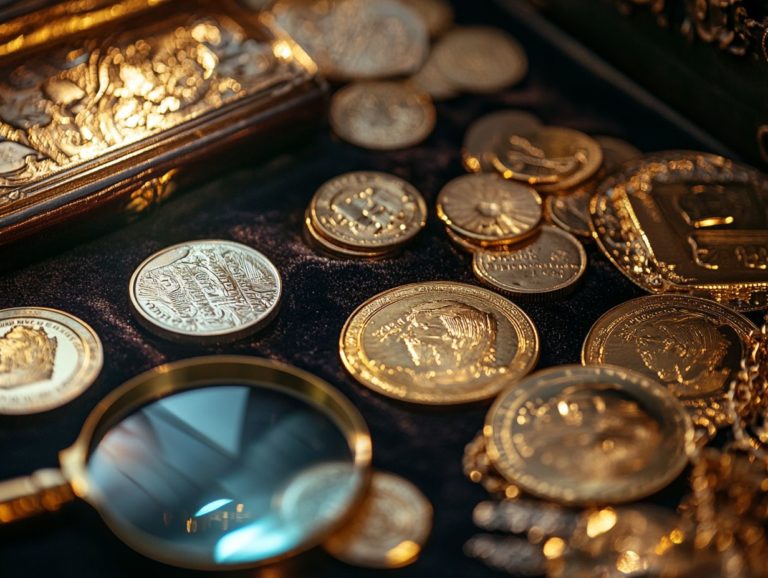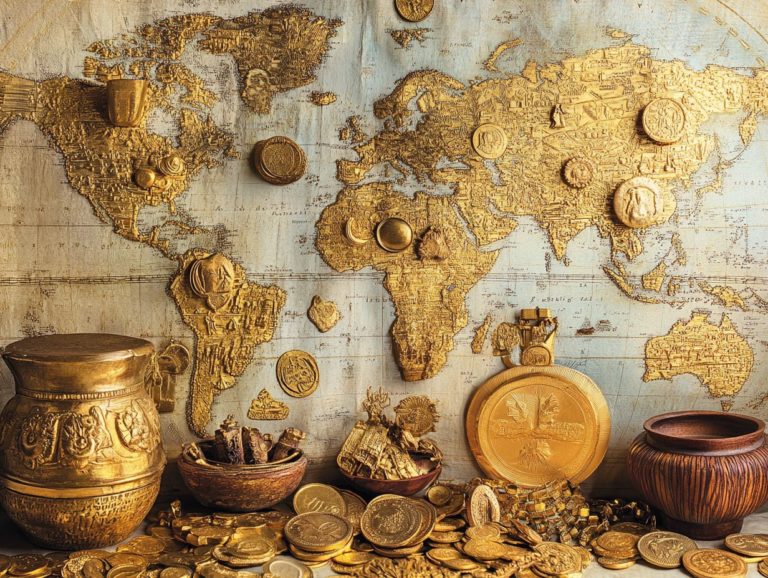The Role of Central Banks in Precious Metal Markets
Understanding precious metal markets is essential for anyone interested in finance, investment, or economic trends.
Let s explore the fascinating world of precious metals, highlighting their diverse applications and the substantial influence that central banks wield over these markets. You ll find an analysis of both historical and current trends, shedding light on how monetary policies, interest rates, and inflation intricately affect precious metal prices.
Key interventions by notable central banks are discussed, along with insightful future predictions. Immerse yourself in this analysis to uncover the complex relationship between central banks and precious metals, and discover what it signifies for investors and the global economy.
Contents
- Discover Key Takeaways About Central Banks and Precious Metals!
- The Basics of Precious Metal Markets
- The Role of Central Banks in Precious Metal Markets
- Central Bank Policies and Precious Metal Prices
- Central Bank Actions and Market Reactions
- The Future of Central Banks in Precious Metal Markets
- Frequently Asked Questions
- What is the role of central banks in precious metal markets?
- How do central banks impact the price of precious metals?
- Why do central banks hold precious metals in their reserves?
- Do central banks disclose their precious metal holdings?
- How do central banks use precious metals in times of economic crisis?
- Can central banks manipulate the price of precious metals?
Discover Key Takeaways About Central Banks and Precious Metals!
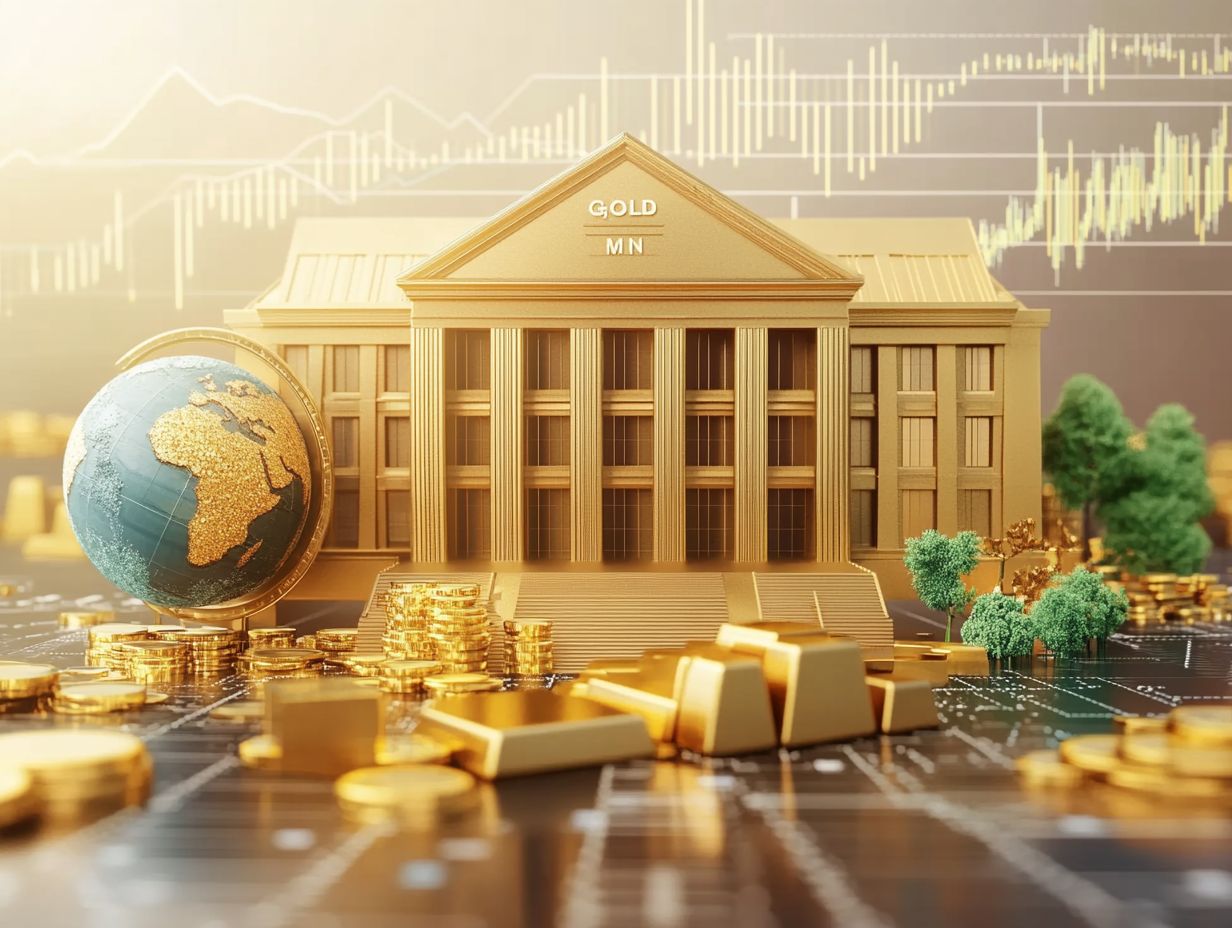
Central banks play a significant role in the precious metal markets, influencing prices and impacting market reactions through their policies and interventions, especially during economic crises.
Interest rates and inflation are key factors that central banks consider when making decisions that affect the precious metal markets.
The future of central banks in precious metal markets is uncertain, with potential changes and predictions being made about their role and influence in the market.
The Basics of Precious Metal Markets
Precious metal markets hold a pivotal position in global finance, shaped by many economic factors and influential entities.
Central banks, the constant demand for gold, and protecting against inflation underscore the role these metals play as safe havens amid market turbulence and economic downturns.
Understanding precious metals is crucial for navigating your investment strategies effectively.
Types of Precious Metals and Their Uses
The most commonly traded precious metals include gold, silver, platinum, and palladium, each serving distinct roles in various industries from jewelry to electronics.
Gold is often regarded as a safe-haven asset and is widely utilized in electronics for its exceptional conductivity and resistance to corrosion, making it the go-to choice for high-performance components.
Silver plays a vital role, especially in photography and solar panels, thanks to its impressive electrical and thermal conductivity.
Platinum shines in the automotive sector, particularly in catalytic converters, which are devices that reduce harmful vehicle emissions. Its rarity only adds to its appeal as an investment.
Meanwhile, palladium is gaining traction, not just for its automotive applications but also for its increasing use in hydrogen fuel cells, underscoring its significance in the rapidly evolving green technology landscape.
The Role of Central Banks in Precious Metal Markets
Central banks hold a pivotal position in the precious metal markets through their management of gold reserves and influence on monetary policy, which affects global economic stability and inflation.
Recently, many emerging markets have ramped up their net purchases of gold. They recognize it as an essential asset for strengthening their financial systems amid uncertain economic conditions, as highlighted in reports from the International Monetary Fund (IMF).
Historical and Current Trends

The historical trends in gold demand present a fascinating tapestry woven from geopolitical events, economic fluctuations, and strategic maneuvers of central banks.
In recent years, there has been a significant surge in purchases from nations like China, Turkey, and India. As these countries have fortified their gold reserves, their motivations often mirror broader economic strategies and a quest for financial stability amid uncertainty.
When geopolitical tensions escalate through trade disputes or military conflicts nations instinctively seek out secure assets, driving gold prices higher and shifting market dynamics.
In response to these developments, central banks adjust their policies and gold reserves to mitigate risks and seize opportunities. This ever-evolving landscape is a testament to how historical precedents shape current market behaviors and influence investor sentiments.
By diving into these intricate interactions, you gain invaluable insights into the future of gold demand.
Stay tuned for more insights on how to navigate the precious metals market!
Central Bank Policies and Precious Metal Prices
Central bank policies play a crucial role in shaping the prices of precious metals. By influencing interest rates and inflation, they significantly impact overall economic growth.
The relationship between these factors creates a complex landscape for investors, especially during unstable market conditions.
How Interest Rates Affect Gold Prices
Interest rates have a substantial influence on gold demand. When rates are low, gold becomes an attractive investment as a way to protect against inflation.
However, rising rates can deter gold investments due to higher opportunity costs. As interest rates decline, investors may turn to precious metals to safeguard their wealth from inflation.
This shift often leads to increased buying pressure for gold, driving its price higher as market instability prompts a collective flight to safety.
Conversely, when rates rise, the allure of interest-bearing investments can overshadow the benefits of holding gold, resulting in decreased demand.
Understanding these dynamics is essential for investors looking to refine their strategies amid economic changes, as market fluctuations can dramatically impact portfolio performance.
Central Bank Actions and Market Reactions
Central bank actions, such as reported gold purchases and adjustments in reserves, often provoke swift market reactions, directly affecting precious metal prices globally.
Institutions like the Reserve Bank of India play a key role in shaping these market responses by adjusting their gold holdings based on economic forecasts.
Examples of Central Bank Interventions
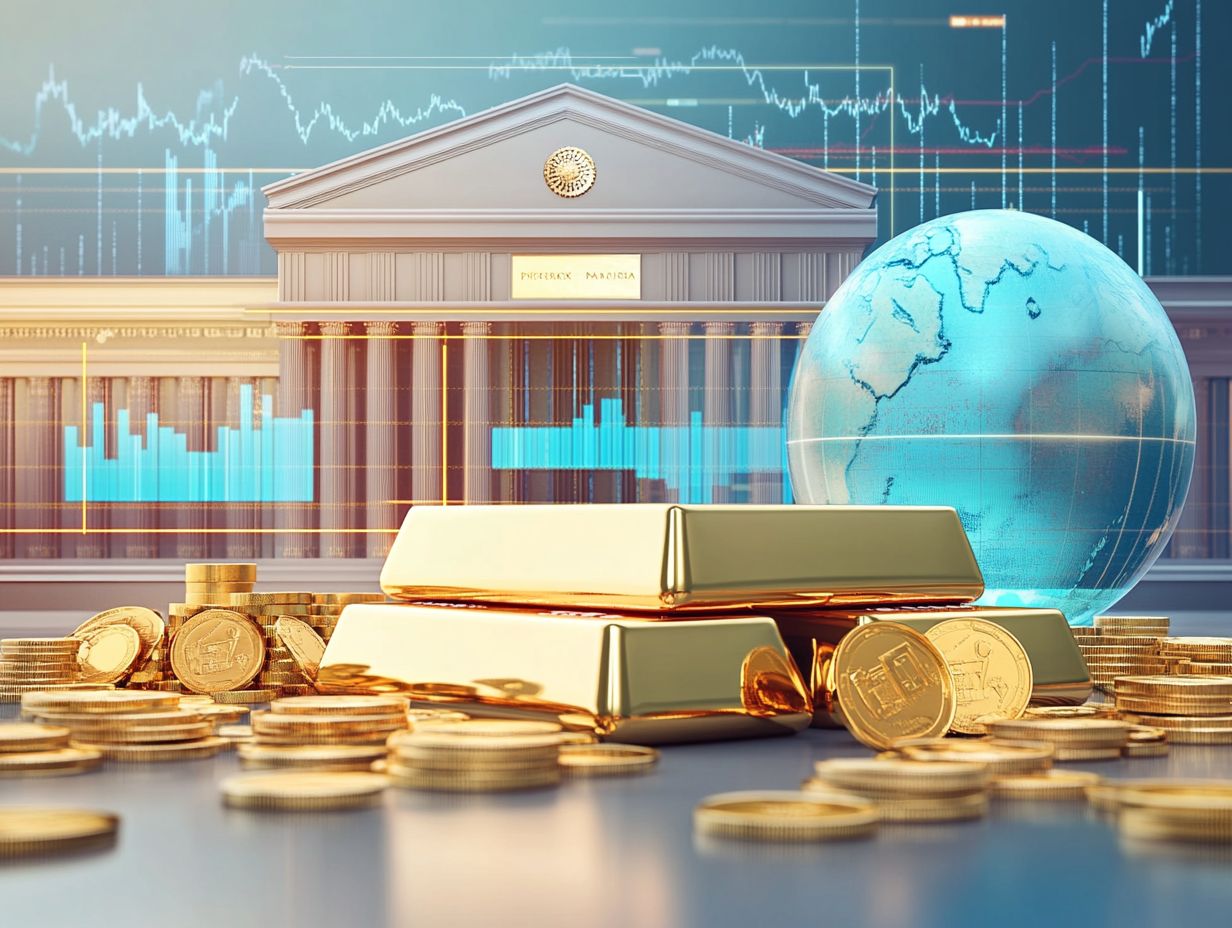
Recent interventions include significant gold purchases by major players such as the People’s Bank of China and the National Bank of Kazakhstan, reflecting a strategic move to strengthen their financial positions.
This trend of accumulating gold reserves is not just a quirk; it highlights a global phenomenon where nations hedge against currency volatility and geopolitical uncertainties.
For instance, the European Central Bank has also engaged in gold transactions, using this asset to shield against economic downturns.
As inflation rates rise and trade tensions escalate, the rationale behind these interventions becomes increasingly clear: gold remains a reliable store of value that contributes to economic stability.
The implications of these actions are significant, enhancing confidence in national monetary systems and strengthening negotiating positions in international markets.
The Future of Central Banks in Precious Metal Markets
The future looks promising for central banks in the precious metal markets, with plans for increased gold purchases aimed at strengthening reserves amid rising global tensions.
As these institutions work to stabilize their economies, their ongoing demand for gold will likely influence the investment landscape in the coming years.
Predictions and Potential Changes
Expect a continued rise in gold demand in the coming years, primarily driven by central banks navigating evolving economic conditions for sustainable growth.
With geopolitical tensions heightening and inflationary pressures persisting, central banks are reassessing their asset allocations.
As 2024 approaches, significant shifts in strategies may lead to increased gold purchases, reflecting a recognition that traditional financial instruments may no longer suffice for safeguarding against uncertainties.
By embracing gold, central banks are not just preserving wealth; they are also taking proactive steps toward fostering economic stability.
Frequently Asked Questions
Stay informed about central bank activity and its influence on precious metals. This is a thrilling time for investors!
In conclusion, understanding central bank policies and their impact on precious metal prices is key to navigating the investment landscape.
What is the role of central banks in precious metal markets?
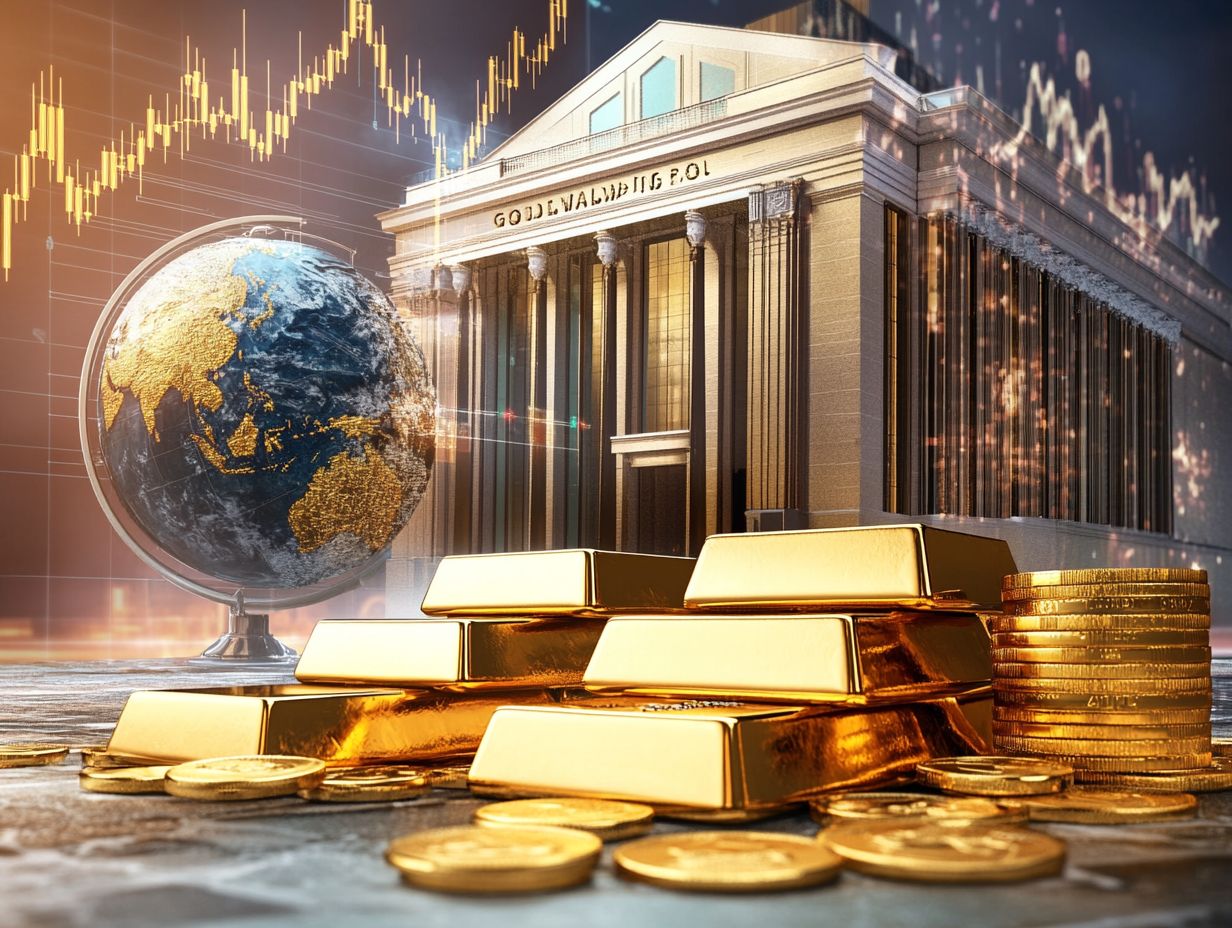
Central banks play a significant role in precious metal markets, influencing the supply and demand of these metals through various policies and actions. Understanding the role of precious metals in global trade can provide deeper insights into these dynamics.
How do central banks impact the price of precious metals?
Central banks impact the price of precious metals by buying or selling these metals in the open market. They also adjust interest rates and control the money supply.
Why do central banks hold precious metals in their reserves?
Central banks hold precious metals to spread out their investments and stabilize their currency. These metals are considered safe assets that protect against rising prices and economic instability.
Do central banks disclose their precious metal holdings?
Central banks must disclose their gold and other precious metal holdings to the public. These reports are usually made quarterly or annually.
How do central banks use precious metals in times of economic crisis?
During an economic crisis, central banks may increase their holdings of precious metals. They might sell these metals to gather money for economic stimulation.
Can central banks manipulate the price of precious metals?
Central banks can indirectly influence the price of precious metals through their policies. However, they cannot directly manipulate the market since prices are ultimately determined by supply and demand.

